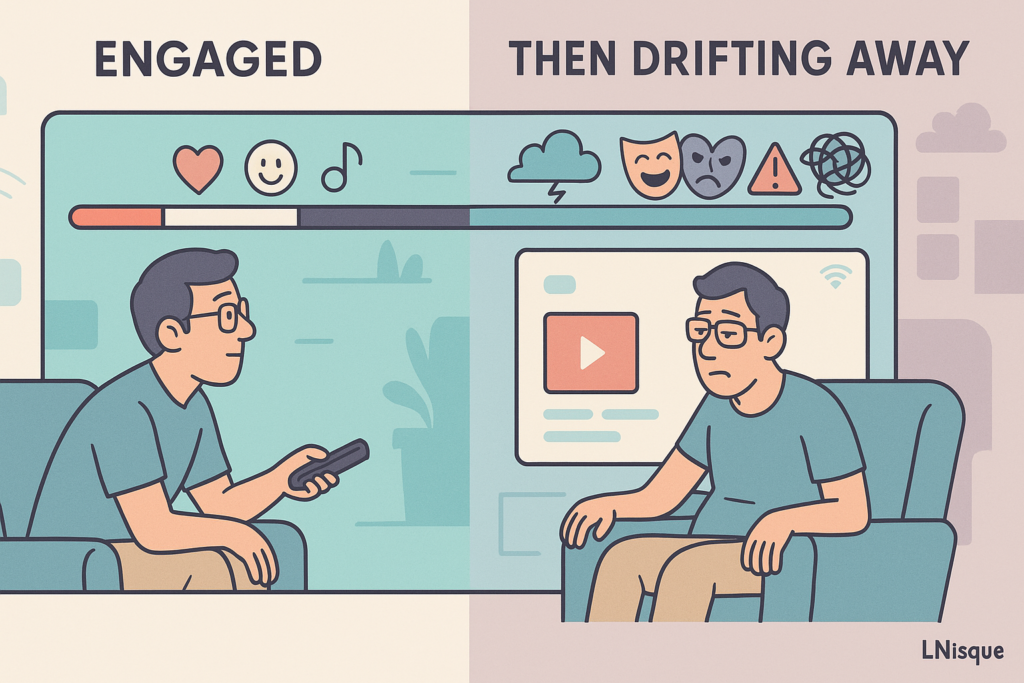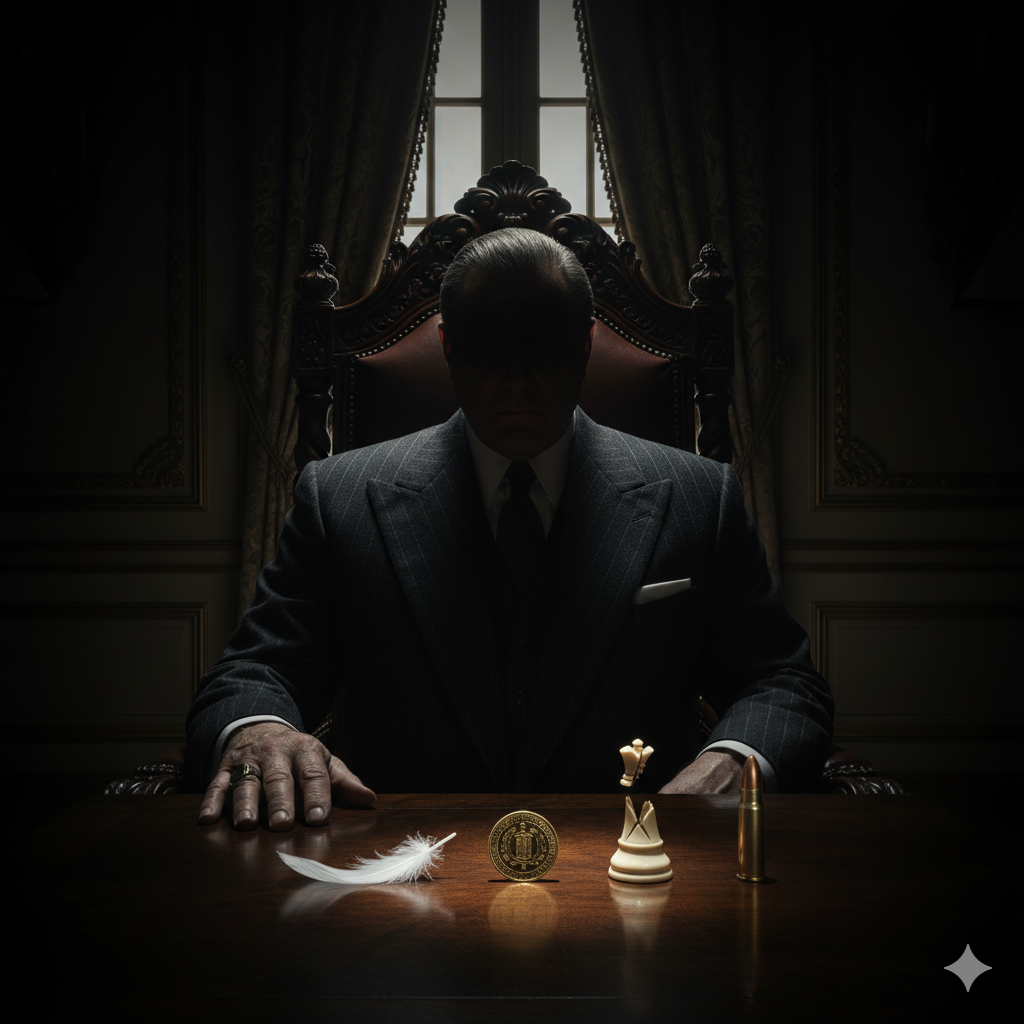
I watched Dude on Netflix, got fully pulled in, and then slowly drifted away. The first half felt fresh and familiar; the second half drowned in twists and moral weight. This is less a review and more a look at what Dude reveals about where mainstream South Indian cinema stands in the OTT age.
I watched Dude on Netflix and realised my own reaction mirrored the film’s treatment of its characters — I leaned in, got involved, and then slowly drifted away.
For a good stretch, I was engaged. The energy felt contemporary, the situations recognisable, the performances easy to invest in. And then the film started doing what a lot of mainstream South Indian cinema does when it runs out of discipline but still wants an emotional high:
- inconsistent characterisation,
- unnecessary twists,
- a dragging second half,
- and a slightly helpless attempt to force a denouement before the runtime expires.
This post is less a formal “review” and more a reflection: why did Dude hook me initially and then lose me, and what does that say about where our cinema is right now?
Where Dude Worked for Me
To be fair, Dude gets several things right in the first half.
- The world feels familiar. The college/youth environment, the conversations, the casual banter — this is not the old template of cardboard classmates waiting for a hero entry. It feels closer to the people you actually know.
- Pradeep Ranganathan’s presence helps. He has that “I’ve met this guy in real life” quality. As a slightly confused, overthinking protagonist, he fits the part without trying too hard to be a “mass hero.”
- The humour is loose, not forced. The film doesn’t rely only on punch dialogues. There are stretches where the interactions feel like natural extensions of how urban youth talk today.
- The music is sticky. You can see why the songs travelled independently. They carry mood, they add momentum, and they are clearly engineered for a reel-first world.
At this stage, I was perfectly willing to accept the usual commercial liberties.
Mainstream South Indian cinema has always had an unwritten deal with the audience:
You give me energy and emotion; I’ll forgive your shortcuts with logic, probability, and geography.
For a while, Dude honours that contract.
Where It Started Losing Me
The slip happens when the film tries to scale up from “relatable youth rom-com” to “heavy social drama” — and wants to cover love, guilt, abortion, family honour and redemption in the same breath.
That’s when the cracks start to show.
1. Characterisation that bends to the plot
I don’t mind a story taking liberties with events. But I do mind when it takes liberties with core motivations.
Several key decisions in the second half feel like this:
- A character behaves in one way in a scene, and almost the opposite way a little later, without enough inner transition.
- Pivotal choices feel less like “this is who they are” and more like “this is what the screenplay needs right now.”
This is where I felt the inconsistent characterisation most strongly.
It’s as if the film updates its people like software patches: “From this point onwards, this character will now behave like X.”
When the stakes are low and the tone is light, audiences forgive this.
But once the story moves into serious territory, it stops feeling like masala and starts feeling like emotional laziness.
2. Twists that dilute, not deepen
Commercial South Indian cinema loves escalation. The standard ladder is: small problem → bigger problem → massive problem → only-our-hero-can-fix-it resolution.
When done well, this creates that “whistle and clap” experience.
In Dude, the escalations started to resemble a staircase that never quite reaches a landing:
- Secret relationship
- Consequences of that relationship
- Family pressure and moral panic
- High-stakes decisions
- Rescue attempts, staged and real
- Fresh resets and new beginnings
By themselves, none of these elements are new. We’ve seen them across decades.
The problem is how quickly they stack up and how little time is spent letting any one of them truly sink in. After a point, I found myself no longer asking “Why are they doing this?” and only tracking “Okay, what next?”
That’s not engagement; that’s survival.
3. Runtime vs. emotional bandwidth
There is a specific late-second-half sensation which many of us recognise now: you can feel the film is running out of time, but it still has too many unresolved threads.
That’s exactly how Dude felt in its final portions:
- Scenes that needed silence and processing are rushed.
- Scenes that could have been handled in a couple of beats are stretched out for extra drama.
- The ending feels less like the natural consequence of everything and more like a set of fixes assembled under deadline.
This is where I sensed the “helpless effort to push things towards a denouement” most clearly. The film doesn’t so much land as scramble to a halt.
The Mainstream South Indian “Liberties” – And Why They’re Not Enough Anymore
To be clear, none of this is unique to Dude. It is operating within a well-established grammar.
Mainstream South Indian cinema has traditionally thrived on:
- Big emotional spikes rather than consistent arcs
- Convenient coincidences and plot armour
- Song placements as shortcuts for developing relationships
- Tonal shifting — comedy, melodrama, social message and “hero moments” in the same film
By these standards, Dude actually delivers:
- It has high-energy moments.
- It attempts to touch on socially loaded themes.
- It offers enough drama to make a single-theatre audience feel they “got their money’s worth.”
- The box office response shows it connected commercially.
So why did I, and many like me, feel engaged initially and then drift away?
I suspect the answer lies not only in the film, but in how our viewing habits have evolved.
When OTT Discipline Meets Theatrical Liberty
Most of us who watch Dude on Netflix are straddling two worlds:
- We grew up on mainstream South Indian cinema, with all its liberties and excesses.
- We now binge finely crafted shows and films from everywhere, where character consistency and structural discipline are much tighter.
That creates a new internal benchmark, even if we don’t consciously articulate it.
When a film looks and sounds contemporary, and positions itself close to our lives:
- We stop accepting soap-opera logic so easily.
- We expect serious themes like guilt, abortion, or honour to be treated with more nuance.
- We notice when characters are moved like chess pieces instead of behaving like people.
It’s not that we have suddenly become “anti-masala.”
We still enjoy heightened emotion and big moments.
But:
The emotional math has to add up.
The liberties can no longer hide thin writing.
In that sense, Dude feels like a transition product of its time — ambitious in intent, familiar in craft, and caught between two audience expectations.
My Simple Test While Watching
Lately, I unconsciously apply one simple test to films like this:
Do I care more about the people than about the plot?
- In the first half of Dude, I cared about the people.
- Somewhere in the second half, that shifted. I caught myself watching the plot, not the characters.
Once that happens, every twist feels like a trick, and every liberty feels like a shortcut.
That, for me, is the real missed opportunity of Dude.
Not that it is “bad” — it clearly works for many viewers — but that it had enough going for it to be much more than a mixed experience.
Key Takeaways (for me)
- Liberties are acceptable; dishonesty isn’t.
I can accept cinematic exaggeration, but not when character motivations bend carelessly to fit a twist. - More twists ≠ more engagement.
Emotional investment comes from depth, not volume. When everything is high-stakes, nothing truly feels high-stakes. - Our viewing baseline has changed quietly.
OTT exposure has made audiences more sensitive to inconsistency, even when we still enjoy big, commercial cinema. - Dude reflects a larger shift.
It’s one of many recent films trying to combine instant gratification with “serious” themes, but without always doing the structural hard work that the newer audience silently expects.
Where to Watch
At the time of writing, Dude is available to stream on Netflix.
It’s worth a watch if you’re curious about where mainstream South Indian cinema currently stands — halfway between old masala instincts and new OTT expectations.
The interesting part is not just whether you like it, but when you start to drift away… or if you do at all.

